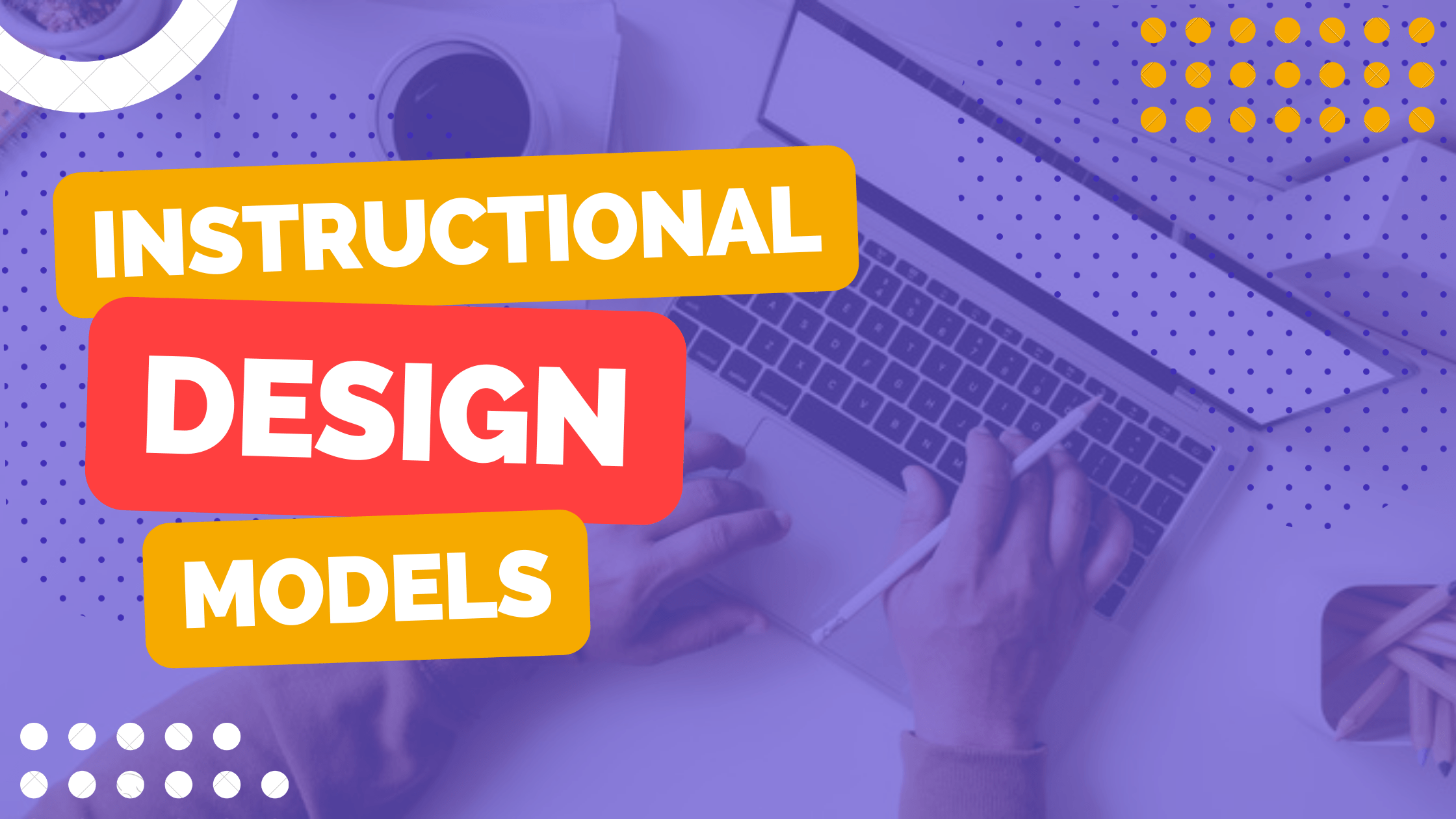The Instructional Design Model: A Practical Guide To Better Instructional Design

Instructional Design Model is one of the most misunderstood and undervalued technical fields in software today. Modern software is complex, and no matter how much we try to make it user-friendly, it’s still going to be a series of tangles of code. The top reasons for this lack of appreciation for instruction design are its complexity and the difficulty in communicating its value to leaders who are not directly involved with the software development process.
Fortunately, the two main tools that support instruction designers – instructional design theories and instructional design models – have become more accessible than ever. This article will explore those tools, their benefits, and how they can be used effectively to improve your instructional design skills.
What is an Instructional Design Model?
Instructional designers work on many aspects of the software lifecycle, including interpreting information needs and determining how the software will be used. They also help develop methods for demonstrating the software and creating training and support materials. The educational environment is a good example of when this role is especially important; educational software can be used to facilitate learning in a wide range of settings, such as corporate training, independent study, or job training.
Instructional Design Theories
The field of instructional design hinges on several theories that help explain how humans learn and how to create excellent user experiences. Instructional design theories are the “big picture” explanations of the field, and they are the foundation upon which most other designs are built.
Instructional design theories are the foundation of the field and are considered the “grand unifying theories” that explain human learning. These theories include Cognitive Theory, Learning Theory, and Learning Models.
Learning Theory
Theories of human learning explain the process by which people acquire knowledge. Instructional design theories are based on the assumption that people do not “know” things until they “learn” them. Learning Theory explains that the process of learning is a chain of associations, or links, between the things we already know and the things we want to learn.
Learning Theory explains that the more links you create between things you know and things you want to learn, the more likely you are to remember the new information. People are more likely to remember things that are connected to other things they already know because these links help “prime” the information in the brain to be more easily accessed.
Cognitive Theory
Cognitive Theory explains that learning is a process of linking previously unrelated concepts together, and it is based on the premise that the brain makes links between things based on its experience. The brain records information through a process called perception. Your eyes take in sensory data (the stimulus) and send it to your brain (the perceiver). Your brain organizes the data so you can understand what it means, and it turns that information into something you can remember and use (the concept).
If you want to learn, you must create links between concepts in your brain. If you want to create links between related concepts, you must associate new information with things you already know.
Cognitive Theory suggests that the more links you create between concepts you want to learn and things you already know, the more likely you are to remember them.
Learning Models
Models of learning explain how humans learn, how they store and retrieve information, and how they apply the information they retrieve. The most common Learning Model is the Systematic Model of Learning, which explains that people learn by breaking down information into smaller parts, relating each part to one or more other parts of the same or a different type of information, and finally combining all the parts to create a new logical whole.
Learning Models explain that learning happens in three stages: representation, retrieval, and application. Humans are more likely to remember information if it is presented in a meaningful way. Once information is stored in your brain, you are more likely to retrieve it by creating links between concepts that you want to learn and things you already know. Finally, you are more likely to use the information you retrieve when you apply it to new situations.
Application Model
Application Model explains the way people use information, how they create mental models, and how they apply new knowledge. It is based on the assumption that people are more likely to successfully use information they created themselves.
Application Models suggest that people use mental models to create new models of reality in their heads, or “maps.” Mental models are created from existing models in your head and are used to create new models from scratch. People are more likely to successfully use information if they created it themselves.
Application Models explain that successful use of information requires creating a mental map of the information, which leads to successful retrieval of information. Finally, successful use of information requires creating a new model of reality.
Application Models suggest that the best way to use information is to create a mental model and then use that model to create new information.
An instructional designer is what?
This methodical approach, which is based on instructional theories and models, is used by instructional designers when creating material, experiences, and other solutions to aid in the learning of new information or skills.
Instructional designers should first conduct a needs assessment to ascertain the requirements of the learning event. This assessment should include determining what the learner should know and be able to do as a result of the training or learning solution as well as what the learners already know and can do.
The course design and all instructional resources, such as presentation materials, participant guides, handouts, and job aids or other materials, are then developed by instructional designers. They are frequently in charge of assessing training, which includes determining what was taught and if the learning strategy resulted in observable behavior change.
The ATD’s Talent Development Capability Model states that instructional designers adhere to a process that includes needs analysis, process design, material development, and effectiveness assessment. To maximize learning and knowledge transfer, instructional design calls for the analysis and selection of the best tactics, methodologies, and technology. The knowledge and abilities required to properly create a learning endeavor should be listed on an instructional design resume and portfolio.
How Can ATD Support Your Instructional Design?
Since our organization’s inception in 1943, ATD has concentrated on assisting talent development professionals in their positions by implementing best practices and enhancing organizational outcomes. ATD offers opportunities for designers to learn the newest methods while utilizing the newest technologies by curating the greatest information from the world’s foremost professionals in the field through instructional design.
We understand how instructional design integrates with evaluation, training, evaluation, and other areas of workplace learning because we approach talent development holistically. Additionally, we are the industry pioneer in setting standards for instructional design and talent development in general.
Instructional Design Models’ Qualities
According to Branch and Merrill (2002), every instructional design model ought to include the following qualities:
- The learner and his or her performance are the main focus of instructional design.
- Designing instruction with goals in mind Setting clear objectives is crucial.
- Designing instruction with real-world performance in mind. Encourage students to engage in the actions that are expected of them in the real world.
- The main focus of instructional design is on outcomes that can be assessed in a valid and reliable manner. It is crucial to develop measurement tools that are accurate and trustworthy.
- The design of instruction is empirical. The process’s beating heart is its data.
- Typically, instructional design is a team endeavor. Teamwork is typically required for this process.
What do Instructional Design Models Entail?
Models for instructional design are used to describe the procedure for creating instructions. The following are some of the most widely used models that can be employed in various contexts.
- ADDIE Model
- Merrill’s Principles of Instruction
- Gagne’s Nine Events of Instructions
- Bloom’s Taxonomy
- Dick and Carey Model
- Kemp Design Model
- Action Mapping by Cathy Moore
- Successive approximation model (SAM)
Related searchers
instructional design models pdf
instructional design models ppt
what is the best instructional design model
instructional design models and theories
instructional design models comparison
kemp instructional design model
systematic instructional design model
instructional design models for online learning
Summary
Instructional design theories explain how people learn and how they create mental models. Learning models explain the link between concepts, cognitive theories explain how the brain links those concepts together, and learning models explain the link between the information and the person using it.







